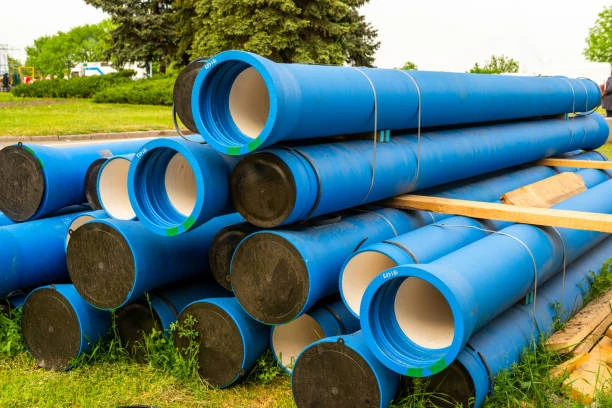In the realm of plumbing and water management, the introduction of new standards is pivotal for ensuring quality, safety, and efficiency. Recently, the American Society for Testing and Materials (ASTM) released a new standard for CX-PE pipe fittings. This article will explore the implications of this standard, the role of pipe press fittings in modern systems, and what it means for industry stakeholders.
1. Understanding CX-PE Pipe Fittings
CX-PE pipe fittings are designe to enhance the functionality and reliability of polyethylene pipe systems. The “CX” designation refers to a specific classification that addresses the unique requirements of certain applications, ensuring that these fittings can withstand varying pressures and environmental conditions.

2. Importance of the New ASTM Standard
The introduction of the ASTM standard for CX-PE pipe fittings is a significant step forward in the industry. Here are some of the key benefits:
- Quality Assurance: The new standard sets a benchmark for manufacturing processes, ensuring that all CX-PE fittings meet rigorous quality criteria.
- Safety Enhancements: By adhering to the new standard, manufacturers can produce fittings that are safer and more reliable, reducing the risk of failures in the field.
- Interoperability: The standard promotes compatibility between different manufacturers’ products, facilitating easier integration and installation.
3. The Role of Pipe Press Fittings
Pipe press fittings are crucial components in the installation of piping systems. They offer several advantages that align with the goals of the new ASTM standard:
- Efficient Installation: Pipe press fittings are designe for quick assembly, allowing for faster installation times and reduced labor costs.
- Leak-Proof Connections: These fittings create secure, leak-proof seals, which is essential for maintaining the integrity of fluid transport systems.
- Versatility: They can be use with various materials, making them a popular choice in both residential and commercial applications.
4. Applications of CX-PE Pipe Fittings
CX-PE pipe fittings are widely applicable in various sectors, including:
- Water Supply Systems: These fittings ensure that potable water systems operate effectively and safely.
- Irrigation: In agriculture, CX-PE fittings help create efficient irrigation systems, supporting sustainable farming practices.
- Industrial Use: Many industries rely on CX-PE fittings for their chemical processing and wastewater management systems.
5. Economic Implications for Manufacturers
The new ASTM standard is expecte to impact manufacturers in several ways:
- Increased Compliance Costs: While adhering to new standards may require investment in quality control processes, the long-term benefits include enhanced market reputation and customer trust.
- Market Expansion: Manufacturers that comply with the standard may find new opportunities in markets that require certified products, thereby expanding their customer base.
6. Challenges in Implementation
While the new standard presents numerous advantages, it also poses challenges:
- Training Requirements: Manufacturers and installers will need to be educate on the new standards and best practices for installation.
- Quality Control: Ensuring compliance will necessitate stricter quality control measures, which could lead to increased operational costs.
7. Future Outlook for CX-PE Pipe Fittings
The future for CX-PE pipe fittings looks promising, especially as the demand for reliable and efficient plumbing solutions continues to rise. As industries evolve, the need for compliant and high-quality fittings will only grow, solidifying the role of CX-PE fittings in modern infrastructure.
The future outlook for CX-PE pipe fittings is promising, driven by increasing demand for durable and efficient plumbing solutions. As urbanization continues to rise, the need for reliable infrastructure is paramount.
Technological advancements will likely enhance the production of CX-PE fittings, improving their performance and sustainability. Innovations in manufacturing techniques will lead to higher quality products with longer lifespans, meeting industry standards.
Moreover, the shift towards environmentally friendly materials will boost the popularity of CX-PE fittings. Their recyclability and reduced environmental impact align with global sustainability goals, attracting more consumers.
Market expansion in emerging economies presents significant growth opportunities for CX-PE pipe fittings. As these regions develop their infrastructure, the demand for reliable piping solutions will increase substantially.
Finally, ongoing research and development will foster new applications for CX-PE fittings. This evolution will position them as essential components in modern plumbing systems, further solidifying their role in the industry.
8. Conclusion
The introduction of the new ASTM standard for CX-PE pipe fittings marks a significant advancement in the plumbing industry. By ensuring quality, safety, and interoperability, this standard benefits manufacturers, installers, and end-users alike. The role of pipe press fittings remains critical in this context, providing efficient and reliable connections that support the integrity of water transport systems.
FAQs
- What are CX-PE pipe fittings use for?
- CX-PE pipe fittings are use in various applications, including water supply systems, irrigation, and industrial processes, ensuring reliable and safe connections.
- Why is the new ASTM standard important?
- The new standard ensures quality, safety, and interoperability among manufacturers, enhancing the reliability of CX-PE pipe fittings.
- What are pipe press fittings?
- Pipe press fittings are components that allow for quick and secure connections in piping systems, offering leak-proof seals and reducing installation time.
- How will the new standard impact manufacturers?
- Manufacturers will need to invest in compliance processes, which may increase costs but will also open new market opportunities and enhance reputation.
- What challenges might arise with the implementation of the new standard?
- Challenges include the need for training, increased quality control measures, and potential compliance costs for manufacturers.